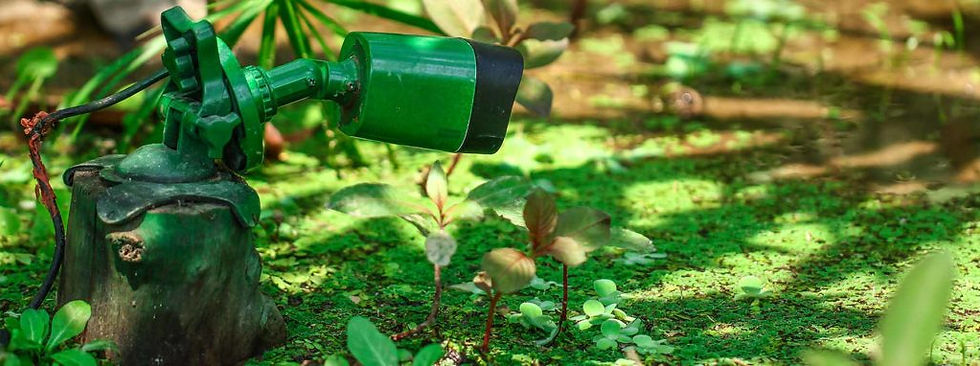
OBBIO - Biodiversity Observatory
The Atlantic Forest is one of the most biodiverse biomes on the planet, but unfortunately it is one of the most threatened. Understanding animal behavior can inform conservation efforts, help to raise awareness to prevent the destruction of the forest or at the very least capture the wonders of animal ethology before a species goes extinct.
As a result, IPBio – Biodiversity Research Institute created the OBBIO – Observatory for Biodiversity project. This project aims at the production of audiovisual material about life in nature. Records are obtained by IPBio professionals in their daily activities and by a network of video cameras, including fixed cameras as well as bushnell camera traps, that monitor fauna and flora 24 hours a day.
The images produced by the OBBIO project are used for scientific research, environmental education, production of documentaries, production of didactic material and dissemination of Brazilian natural heritage. Throughout these years, OBBIO was able to promote its footage in various forms of media, through the internet, social networks, books, scientific articles, open channels such as: Rede Globo, Record TV, SBT, EPTV, TV Tribuna, TV Cultura, TV Gazeta. Via the producer “Mixer”, our images were used to produce one of the episodes of the “Dual Dose Challenge Brazil” program, shown on the Discovery Channel.
Currently OBBIO has a collection of 5000 videos in high definition, more than 15,000 photos and more than 100 hours of nature audios. In the future we expect to be active in all Brazilian biomes.
EXAMPLES

Chupins
For almost 2 years, biologists at the IPBio- Biodiversity Research Institute have investigated the behavior of Molothrus bonariensis, better known as the Shiny cowbird, a bird rooted in everyday imagery and Brazilian language used to describe those who live better at the expense of others.
As we know, the Shiny cowbird practices a form of parasitism by which it places its eggs in the nest of another species of bird – being able to parasite nests of 58 species of Brazilian birds – so that it incubates, or brood, them and feed the invasive chicks.
Although widely known, this phenomenon had never been recorded before on video. After installing cameras near several nests, in the middle of pristine Atlantic Forest, the researchers were successful, recording the exact moment when, not one, but several females of Shiny cowbird lay their eggs in a nest of Rufous-collared sparrow. Days later, the Rufous-collared sparrow moms are already feeding the Shiny cowbird chicks – curiously, already larger than the adoptive mother.
In 2018, a group of researchers: Analía V. López from the Department of Ecology, Genetics and Evolution, Faculty of Exact and Natural Sciences, University of Buenos Aires; Vanina D. Fiorini from the Institute of Ecology, Genetics and Evolution of Buenos Aires (IEGEBA) and University of Buenos Aires – National Council for Scientific and Technical Research; Kevin Ellison of the World Wildlife Fund, Northern Great Plains Program; and Brian D. Peer of the Department of Biological Sciences, Western Illinois University, who study the behavior of birds entered in contact with the IPBio to use the images produced by our biologists to illustrate in their article on reproduction of Shiny cowbirds, titled “Thick eggshells of brood parasitic cowbirds protect their eggs and damage host eggs during laying” was published in Behavioral Ecology, and also in Science magazine.

The lizard attack
One of the first images that OBBIO captured in the year 2009 was the lizard’s attack. During the monitoring work of Atlantic Forest bird nests, where the IPBio researchers were monitoring the nest of Rufous-bellied Thrush (Turdus rufiventris), it was possible to catch the moment when a Huge Tegu Lizard (Salvator merianae) attacked and captured two chicks, in the nest. Although we know that this occurs constantly in nature due to the food chain, images of this exact moment are difficult capture. This was pivotal moment for IPBio since it began the activities of audiovisual production for the OBBIO program. For more details, watch the video.

Habits of Armadillo
IPBio managed to monitor the habits of armadillos on the Betary Reserve finding incredible and curious behaviors such as this bathing armadillo.

Worm in Amphibian
One of the first groups studied by the IPBio in the area of the Betary Reserve were the amphibians. During studies on species richness (amphibian inventory), we encountered a worm crawling under the skin of a species of frog (Boana albomarginata), it is a subcutaneous cylindrical worm. We still do not know exactly what ecological relationship occurs between these two organisms, everything indicates that it is a species of worm still unknown by science.
Major Accomplishments
.png)













